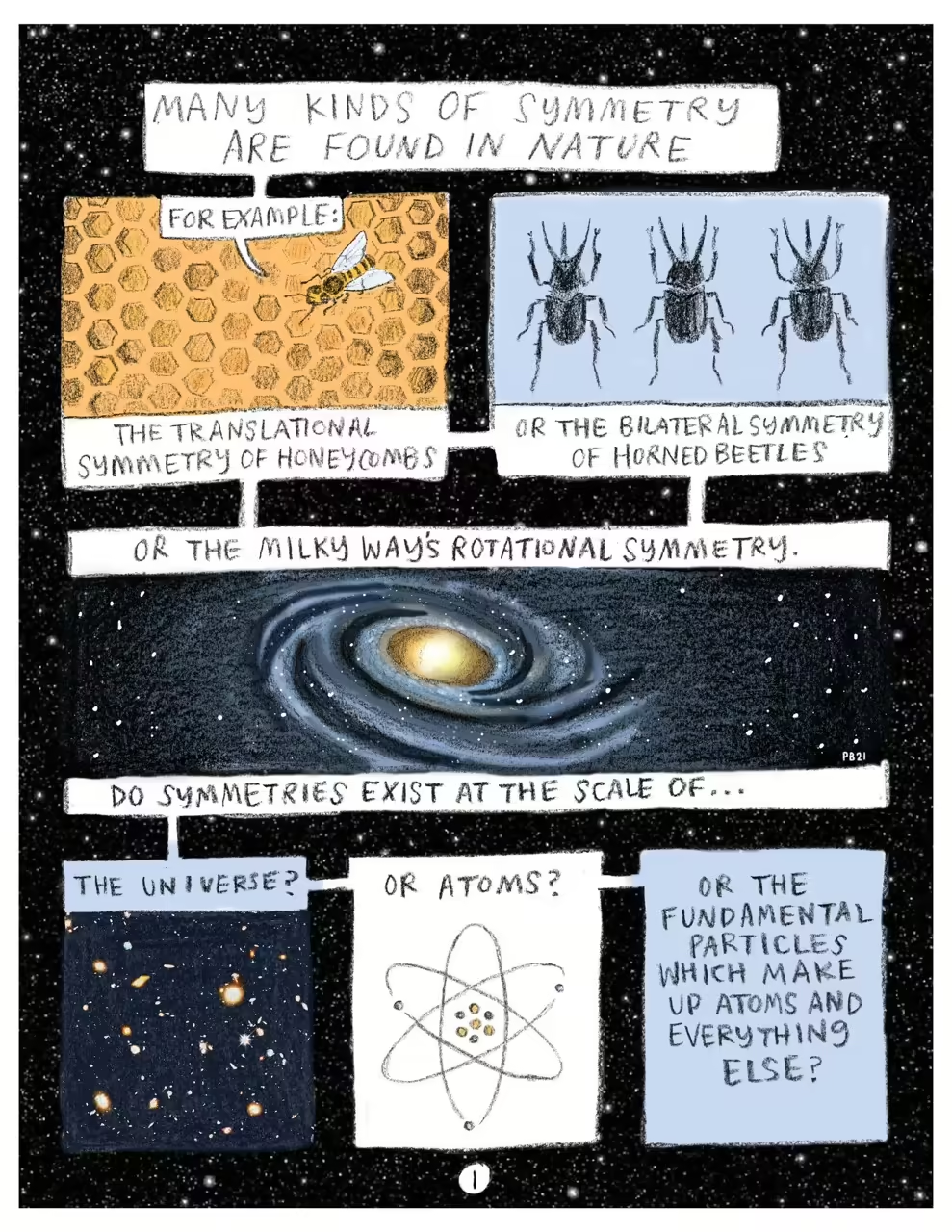


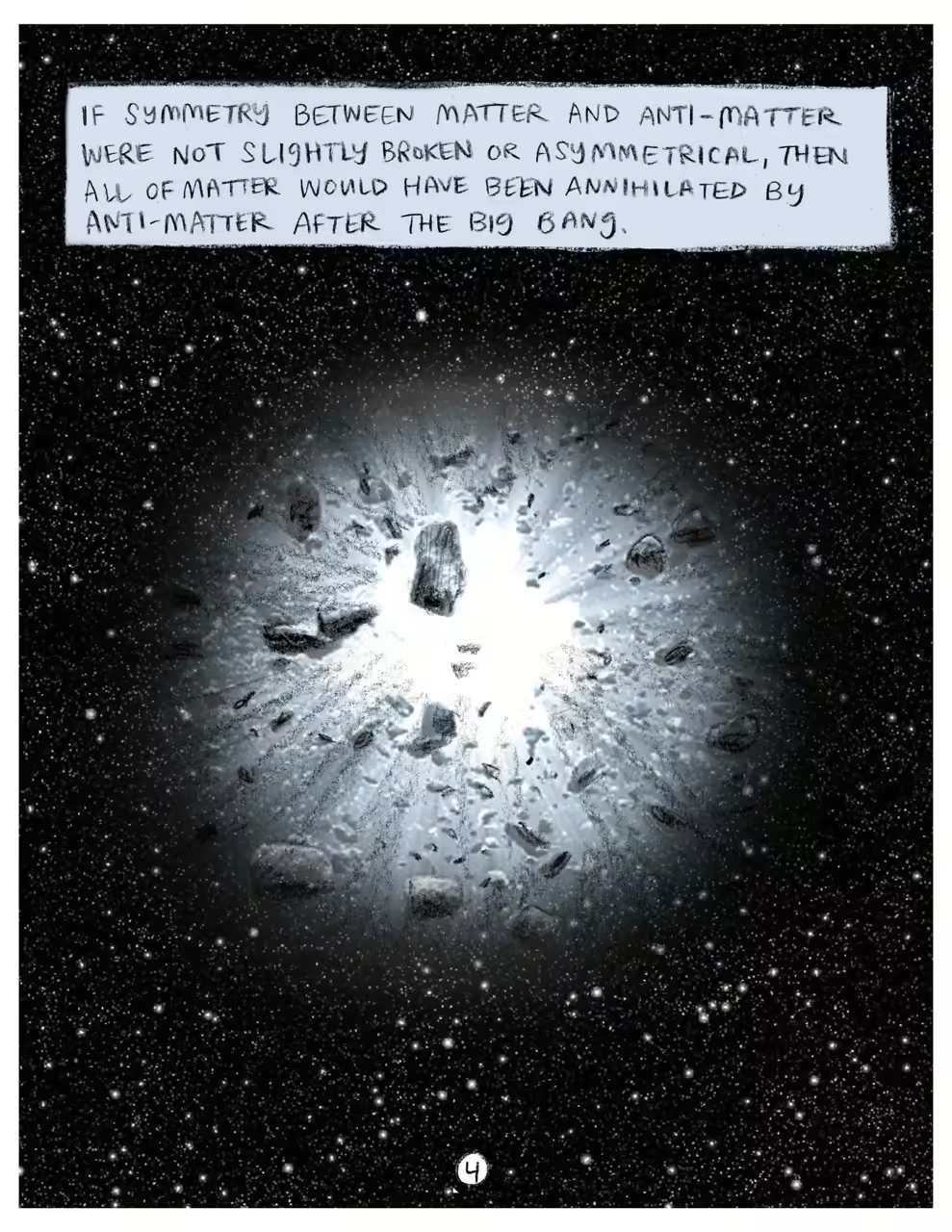
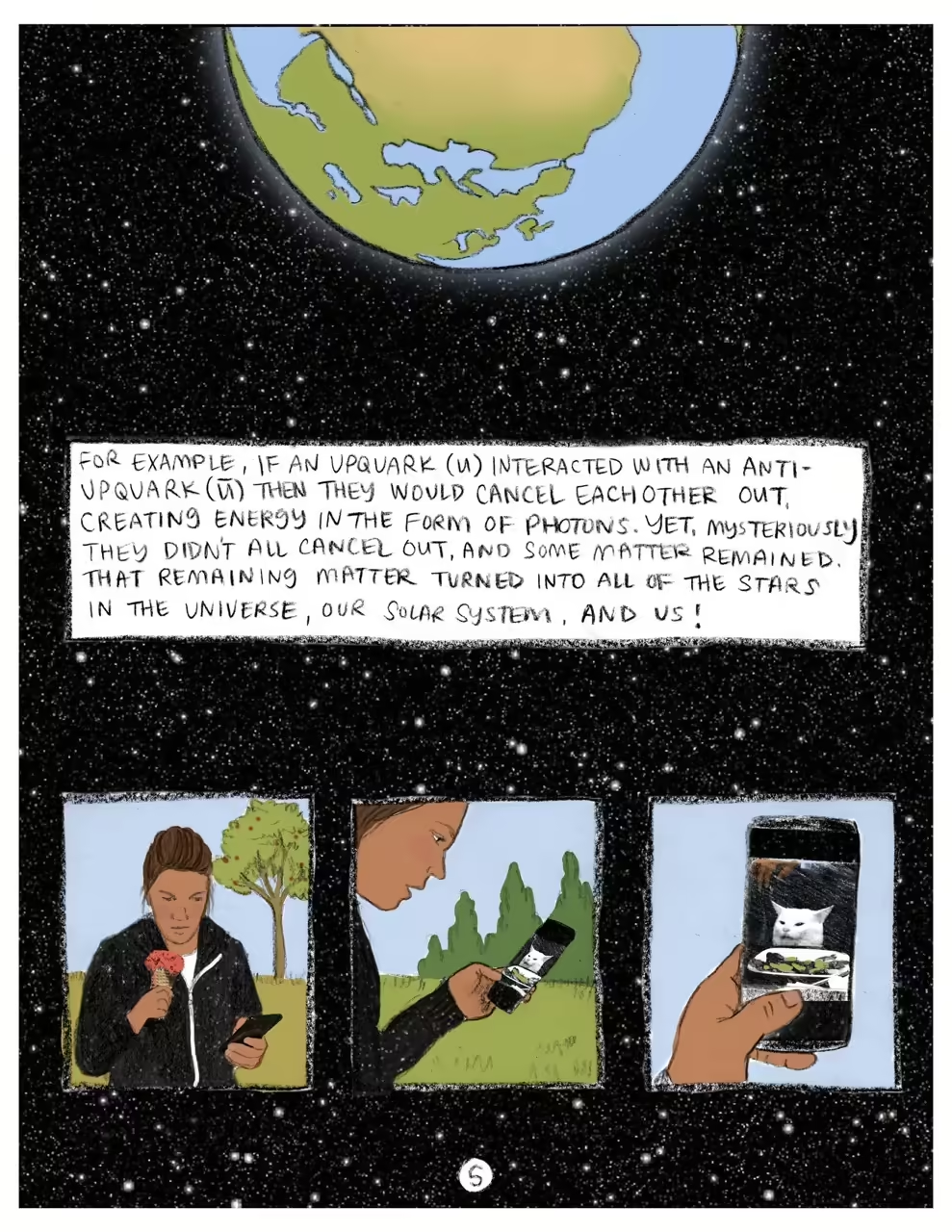
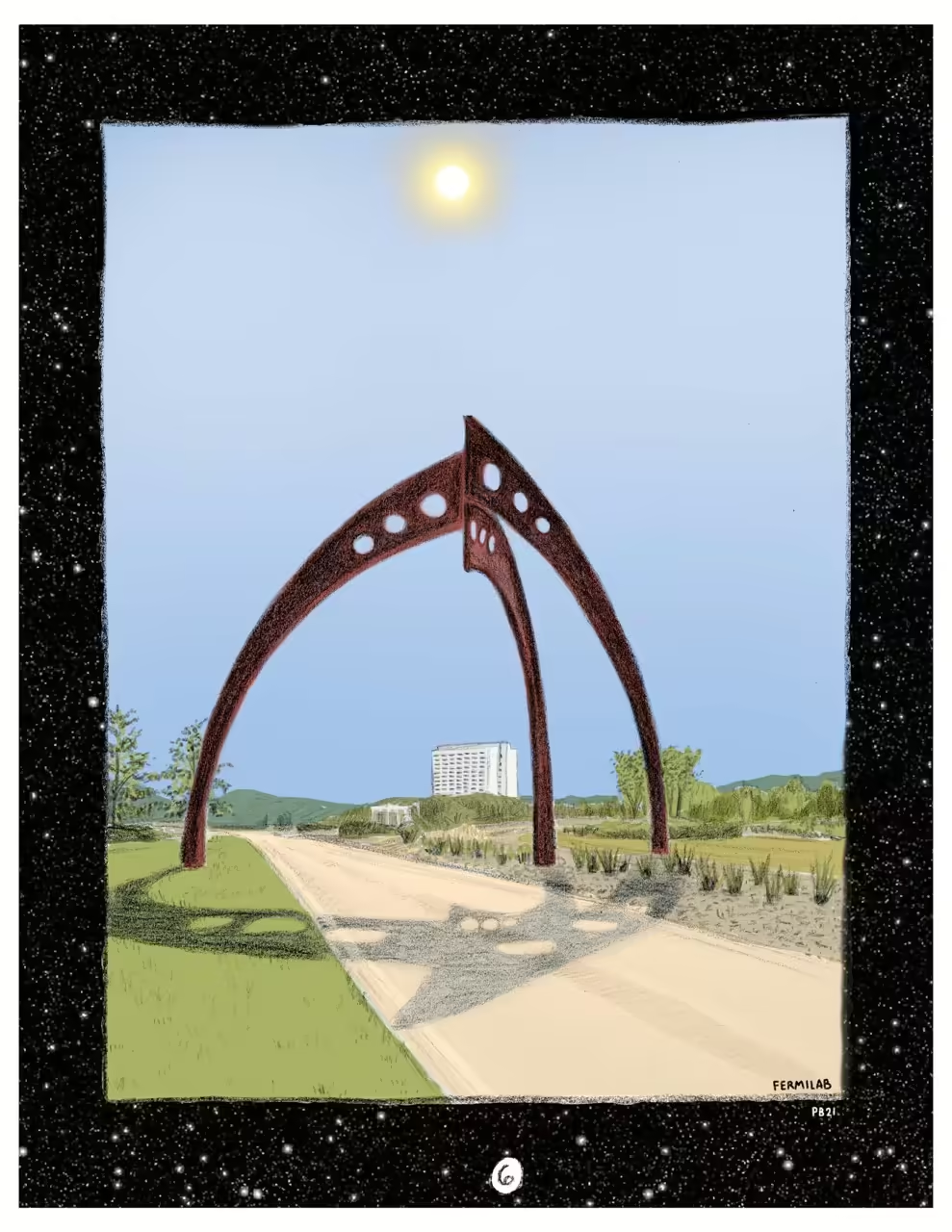
![The background of the page is space. Near the top of the page the space is full of stars, towards the middle the space is full of small galaxies, the blackness of space transforms to a light brown haze and eventually transitions to a light sky-blue. Text box 1: “Another kind of symmetry is the theory of supersymmetry [emphasis]. This theory offers solutions to how galaxies are formed…” Text box 2: “supersymmetry could explain dark matter which is needed to predict galaxy evolution.” An arrow on the side of this text box points to a galaxy that is larger than the other galaxy’s in the page background. Textbox 3: “…or how the sun shines, aka hydrogen fusion:” A diagram of hydrogen fusion: 4 protons are converted into one helium nucleus (the center of an atom, without the electrons). As this conversion process happens energy, positrons and neutrinos are released. First, two protons combine, energy, a neutrino and a positron are released. One of the protons turns into a neutron, and the proton neutron pair form the nucleus of deuterium (a heavy isotope of hydrogen). Next another proton combines with the deuterium to form the light helium isotope (helium -3), energy and a gamma ray are released. Steps 1 and 2 happen twice (ie 6 protons are converted into two helium -3 isotopes). The two helium -3 nuclei combine and form helium -4, this releases 2 protons and more energy. “Supersymmetry could explain what makes [step 1: combining the first two protons] possible.”](https://www.crucialcomix.com/wp-content/uploads/2024/10/Symmetry-in-Physics-Page-07-jpeg.avif)
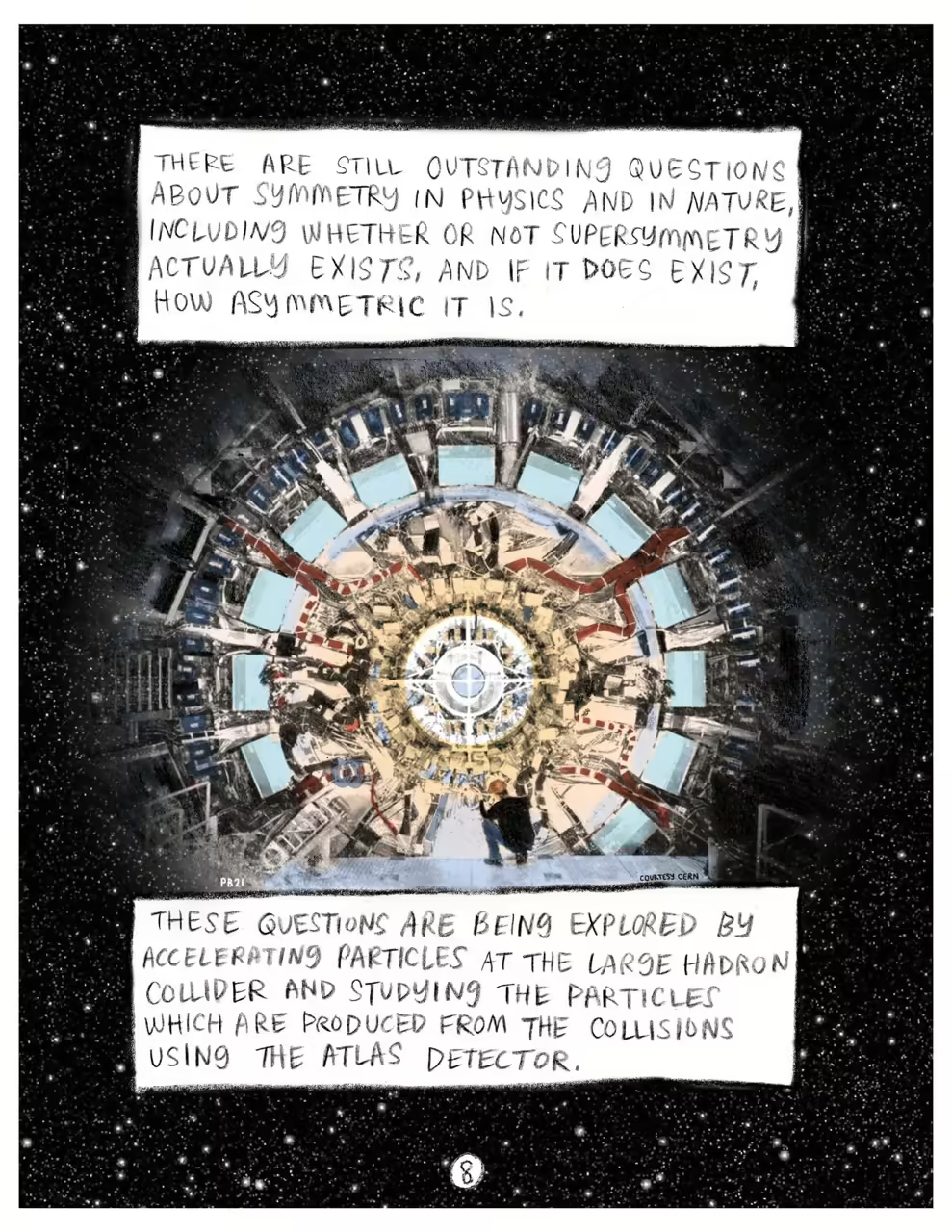
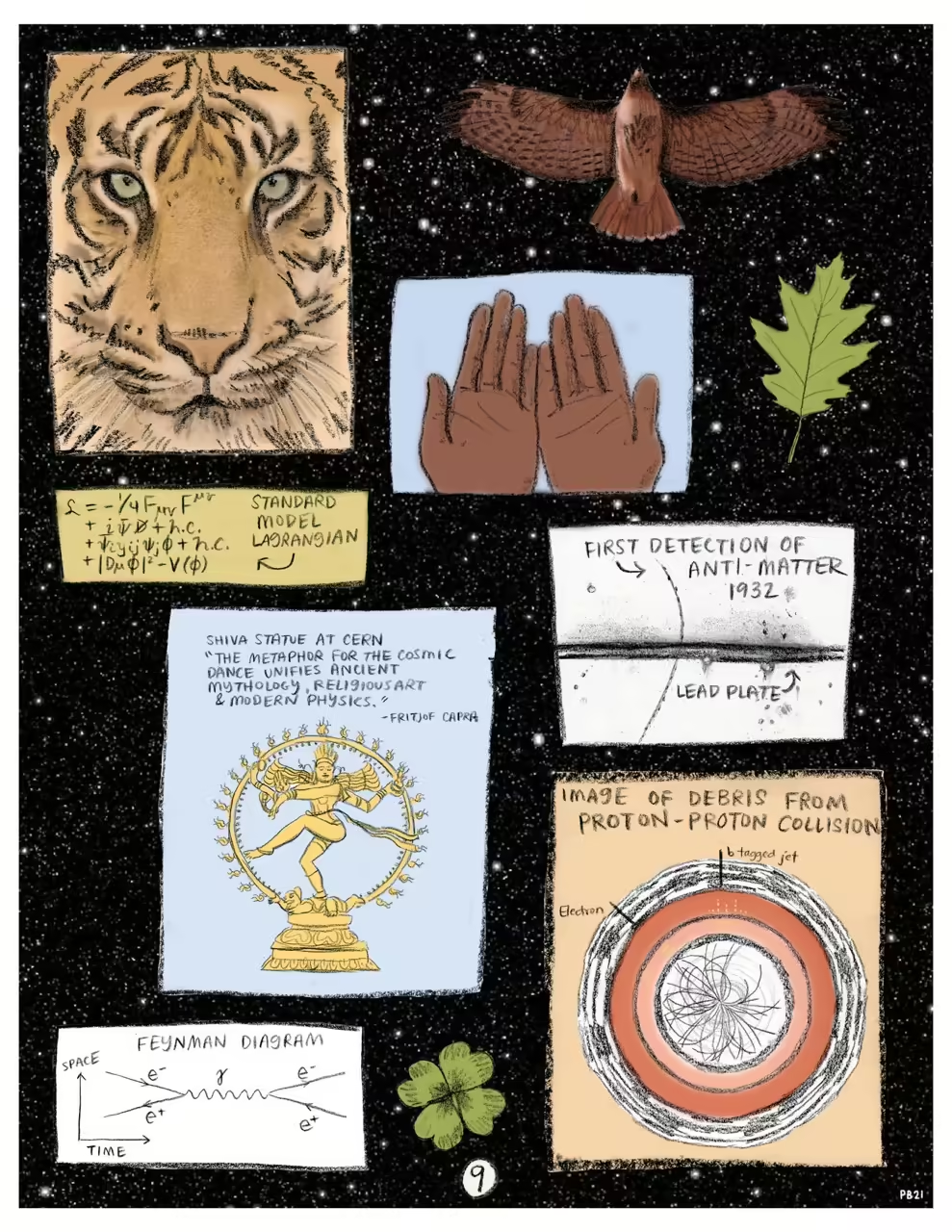

This comic was created through the University of Oregon Science and Comics Initiative, which pairs undergraduate artists with research scientists at the University of Oregon to create comics about the researcher's work.






![The background of the page is space. Near the top of the page the space is full of stars, towards the middle the space is full of small galaxies, the blackness of space transforms to a light brown haze and eventually transitions to a light sky-blue. Text box 1: “Another kind of symmetry is the theory of supersymmetry [emphasis]. This theory offers solutions to how galaxies are formed…” Text box 2: “supersymmetry could explain dark matter which is needed to predict galaxy evolution.” An arrow on the side of this text box points to a galaxy that is larger than the other galaxy’s in the page background. Textbox 3: “…or how the sun shines, aka hydrogen fusion:” A diagram of hydrogen fusion: 4 protons are converted into one helium nucleus (the center of an atom, without the electrons). As this conversion process happens energy, positrons and neutrinos are released. First, two protons combine, energy, a neutrino and a positron are released. One of the protons turns into a neutron, and the proton neutron pair form the nucleus of deuterium (a heavy isotope of hydrogen). Next another proton combines with the deuterium to form the light helium isotope (helium -3), energy and a gamma ray are released. Steps 1 and 2 happen twice (ie 6 protons are converted into two helium -3 isotopes). The two helium -3 nuclei combine and form helium -4, this releases 2 protons and more energy. “Supersymmetry could explain what makes [step 1: combining the first two protons] possible.”](https://www.crucialcomix.com/wp-content/uploads/2024/10/Symmetry-in-Physics-Page-07-jpeg.avif)



This comic was created through the University of Oregon Science and Comics Initiative, which pairs undergraduate artists with research scientists at the University of Oregon to create comics about the researcher's work.